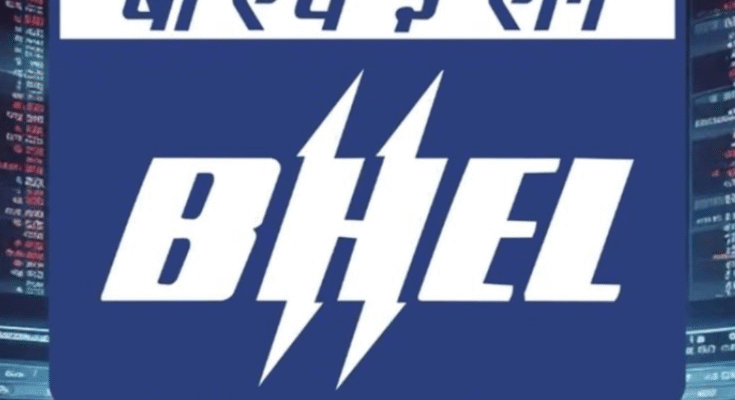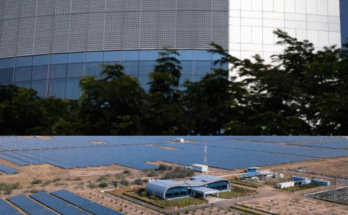BHEL Share Price Overview:
Bharat Heavy Electricals Limited (BHEL) is one of India’s largest engineering and manufacturing enterprises in the energy and infrastructure sectors. Established in 1964, the company has played a crucial role in India’s industrial growth, especially in power generation equipment, transmission systems, and renewable energy solutions. Over the years, BHEL’s share price has witnessed several ups and downs due to changing market dynamics, government policies, and shifts in the energy industry.
As of late 2025, the BHEL share price has been showing notable strength, supported by the government’s push towards infrastructure development and renewable energy capacity expansion. Investors have also shown renewed interest in public sector undertakings (PSUs), leading to increased trading volumes and steady appreciation in BHEL’s stock value.
Current Share Price and Market Performance:
BHEL’s share price has been trading in a positive range on both the National Stock Exchange (NSE) and the Bombay Stock Exchange (BSE). As of October 2025, the stock is hovering around ₹320–₹340 levels, marking a significant rise compared to last year’s price of around ₹190–₹200. This upward momentum has been driven by improved order inflows, better financial results, and the overall optimism in the power and infrastructure sectors.
The company’s market capitalization has also expanded significantly, making it one of the most valuable PSUs in the industrial segment. BHEL’s stock has delivered strong returns over the past year, outperforming the Nifty PSU Index and gaining investor confidence through consistent operational recovery and better project execution.

Reasons Behind the Recent Rally:
Several factors have contributed to the positive trend in BHEL’s share price:
Government Infrastructure Push:
The Indian government’s focus on energy transition, renewable power, and Make in India initiatives has boosted demand for heavy electrical and industrial equipment. BHEL, being a key supplier to these sectors, has benefited from new contracts and modernization projects.
Improved Order Book:
BHEL’s order inflow has risen sharply, particularly from the thermal, hydro, and renewable segments. The company has also diversified into defense, transportation, and space projects, reducing its dependency on the power sector.
Strategic Diversification:
The company is now exploring opportunities in green hydrogen, solar manufacturing, and nuclear power equipment, signaling its readiness to adapt to the changing energy landscape. This strategic shift has attracted investors looking for long-term growth stories.
Better Financial Performance:
BHEL has reported consistent improvements in quarterly revenues and profitability. The cost optimization efforts and enhanced operational efficiency have led to higher margins, strengthening the company’s balance sheet.
Positive Market Sentiment Towards PSUs:
In recent years, public sector enterprises have seen renewed investor interest due to strong dividend policies, stable growth prospects, and government reforms. BHEL has been a major beneficiary of this trend.
Financial Overview:
For the financial year 2024–25, BHEL reported a significant improvement in revenue and profitability. The total revenue stood at around ₹28,000 crore, with a net profit crossing ₹1,000 crore. The company has also managed to reduce its debt levels, resulting in a stronger financial position.
The earnings per share (EPS) has improved, leading to better valuation metrics. BHEL’s price-to-earnings (P/E) ratio has become more attractive, especially when compared to its historical averages. The company’s return on equity (ROE) and operating margins have also shown upward trends, reflecting better utilization of assets and cost control.
Technical Analysis:
From a technical standpoint, BHEL’s share price has been forming a strong bullish pattern over the past few months. The stock has maintained support around ₹280 and faces resistance near ₹350. Analysts believe that a breakout above ₹350 could push the stock towards ₹400 levels in the near term.
The relative strength index (RSI) indicates that the stock remains in a moderately bullish zone, while moving averages (50-day and 200-day) continue to show an upward crossover, signaling sustained momentum. The trading volumes have also increased, confirming strong investor participation.

Future Outlook:
Looking ahead, the future of BHEL’s share price appears promising, supported by multiple growth drivers:
Energy Transition:
India’s commitment to achieving net-zero emissions by 2070 has opened vast opportunities for companies like BHEL in renewable energy, hydrogen technology, and power storage systems.
Revival of Thermal Projects:
Despite the global shift to green energy, India still relies heavily on coal-based power. Several new thermal power projects are being commissioned, ensuring a steady flow of business for BHEL in the short term.
Export Opportunities:
BHEL has been expanding its footprint in international markets, supplying equipment and services to countries in Africa, Southeast Asia, and the Middle East. This diversification strengthens revenue stability.
Government Policies and Reforms:
Policy initiatives such as “Atmanirbhar Bharat” and “Make in India” encourage local manufacturing and procurement, directly benefiting domestic players like BHEL.
Technological Advancements:
With continuous investment in research and development, BHEL aims to modernize its product portfolio and enhance digitalization across its plants, improving productivity and competitiveness.
For More Info:
Risks and Challenges:
While the outlook remains positive, investors should also consider certain risks:
Dependence on Government Projects:
A significant portion of BHEL’s orders come from government and public sector clients. Delays or changes in government spending can impact revenues.
Competition:
The company faces stiff competition from both domestic and global players in the engineering and power equipment industry.
Execution Challenges:
Large-scale projects often face execution delays, which can affect profitability.
Transition Risks:
The shift from conventional to renewable energy requires huge investments, and BHEL must manage this transition efficiently.
Conclusion :
BHEL’s share price reflects the company’s resilience and adaptability in a rapidly evolving industrial landscape. The stock has shown consistent growth, driven by strong fundamentals, improved financials, and favorable market conditions. As India continues to invest heavily in power, infrastructure, and clean energy, BHEL is well-positioned to benefit from these long-term trends.
For investors with a medium to long-term horizon, BHEL shares offer promising potential backed by steady growth prospects, government support, and ongoing business transformation. However, like any investment, one should monitor market volatility, global energy trends, and company performance before making decisions.




